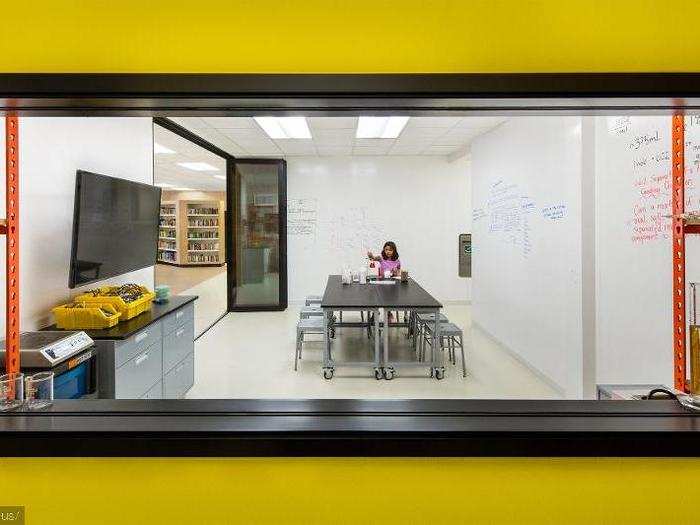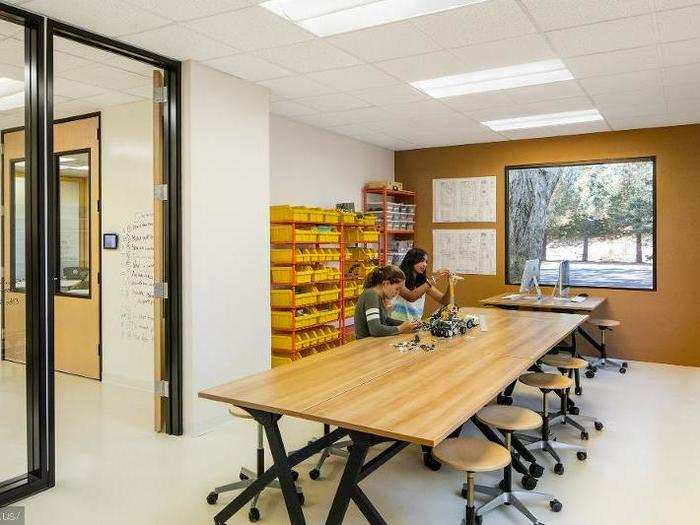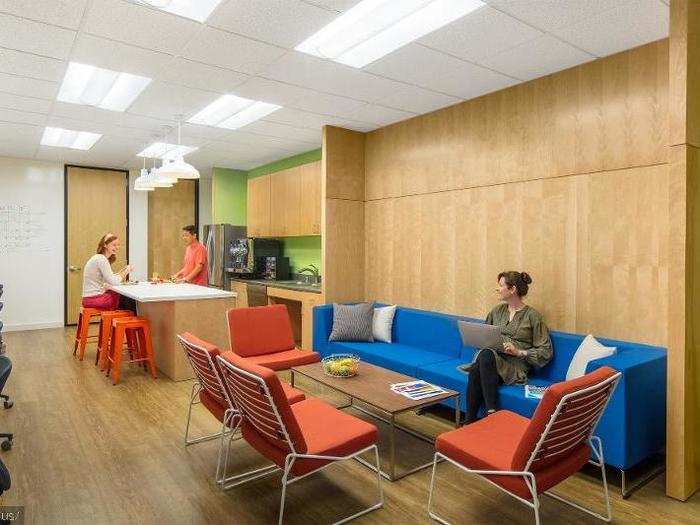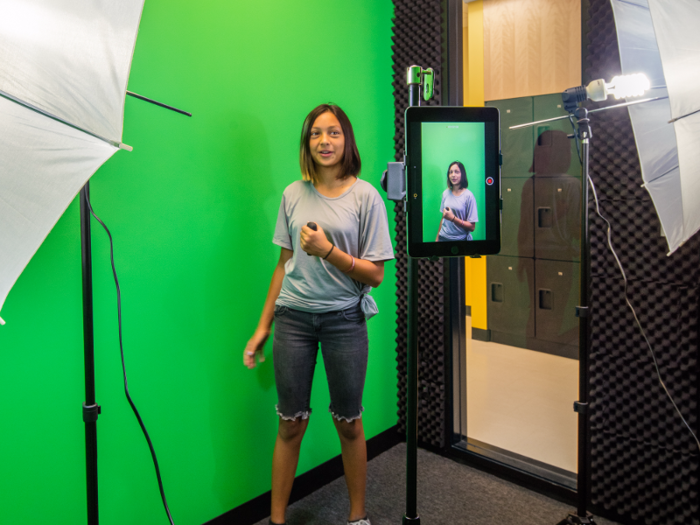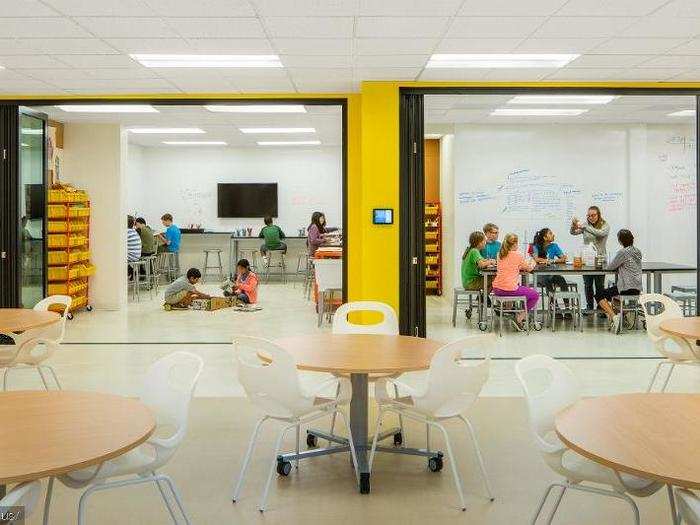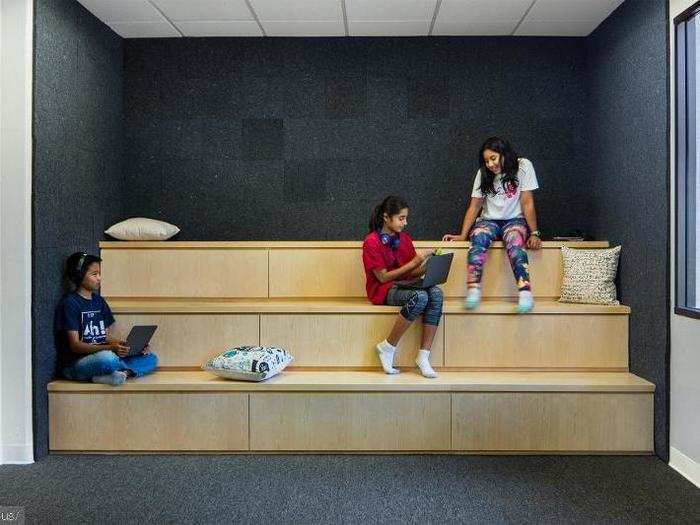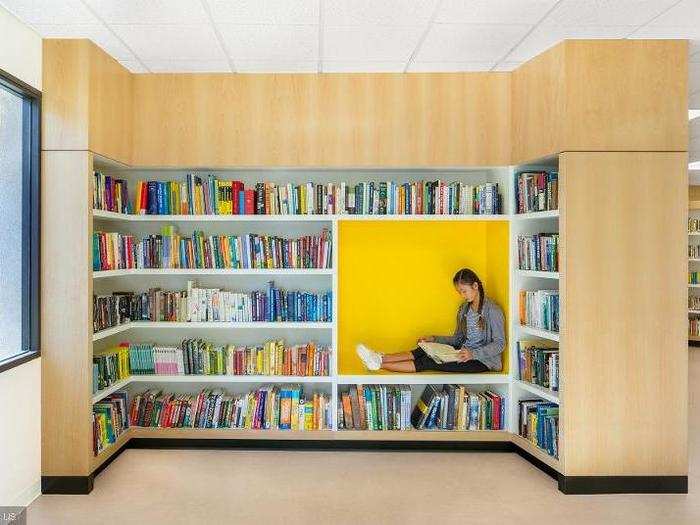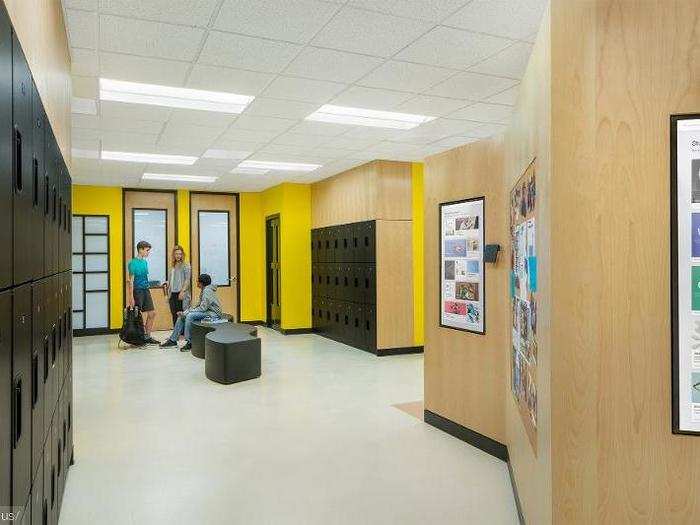It's just a matter of time before more schools around the US go the way of Khan Lab School, blending technology with instruction.
Kurani believes that it's fundamental to education to tinker as you go. Designing schools should be no different.
"In my opinion, learning environments shouldn't weld us to a single curriculum or way of doing things," he said. "Education should be free to evolve and improve constantly."
Even though Khan Lab School caters to just 100 kids, Kurani said the model could be implemented at a much broader scale.
"If a school wanted us to design a campus for 1000+ students, we would first seek to understand what makes that school unique," he said. "After that, we consider how the architecture should be customized for them, taking into account their vision, culture, and needs."
The motto of Khan Lab School is "Everyone's a teacher. Everyone's a student." It was essential for Kurani to build a space that embodied that idea, he said.
Hundreds of visiting teachers visit Khan Lab School each year, and they are encouraged to share their findings on how learning is changing or what students may need. Kurani's team focused on giving teachers designated spaces that cater to a desire for brainstorming, reflecting, and sharing.
It's essentially open-sourced education.
Technology is integral to Khan Lab School's design, Kurani said. And when that tech evolves, the school is designed to adapt.
"Traditional schools have so many fixed elements like load-bearing walls, built-in cabinetry, and tech with heavy infrastructure," Kurani said.
Those kinds of rooms aren't suited to accommodate new technology.
"We chose to build a different kind of school," he said. "For now, students are using iPads, Chromebooks, digital displays, and a rolling TV. When their technology changes, the learning settings can evolve seamlessly."
The school has various "Labs" depending on the activity students are engaged in.
There is the Make Lab, where kids can design, build, and prototype; the Ideate Lab, for brainstorming; and the Chat Lab, useful for discussing ideas and working through problems aloud.
"Given how frequently schools change curriculum and personnel, this classroom model makes sense for the future of education," Kurani said. "For now, all we can bet on is that students will continue learning through dialogue, brainstorming, making, presenting."
Students can also convene in spaces meant to encourage socialization and brainstorming. A growing body of research finds this kind of dynamism improves kids' performance.
Recently, a study of 36,000 students found "personalized learning" boosted standardized test scores in math and reading compared to traditional education. Personalized learning involves teachers taking on more of a coaching role, while students guide their instruction, typically with the aid of technology.
Khan Lab School embraces personalized learning in both its design and philosophy. Students are grouped not by age, but by skill level in various domains.
In the library, for instance, students can duck into nooks for some privacy while they read.
Part of the flexible learning approach means giving kids the chance to be by themselves. Collaboration is important, but if they're surrounded by their peers many students could eventually feel overwhelmed.
"Even with limited space," Kurani said, "there's plenty of distinct micro-environments that offer students a mix of tools and settings to work in."
Kurani's founder, Danish Kurani, told Business Insider that Khan Lab School is meant to combine experimentation and education in a joint school and laboratory.
"We've added many specialty spaces so faculty can test different courses and experiences," Kurani said. These spaces include large interior windows that let everyone to see the experiments taking place, in addition to breakout rooms, commons, and a cafe to give people fixed meeting spaces.
"And just like a lab where scientists are expected to share the results of their testing," Kurani added, "the school is equipped with displays for student and faculty work."

